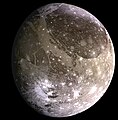Податотека:The Galilean satellites (the four largest moons of Jupiter).tif

Големина на овој JPG-преглед на оваа TIF-податотека: 800 × 262 пиксели. Други разделности: 320 × 105 пиксели | 640 × 210 пиксели.
Изворна податотека (1.830 × 600 пиксели, големина: 1,51 МБ, MIME-тип: image/tiff)
Историја на податотеката
Стиснете на датум/време за да ја видите податотеката како изгледала тогаш.
| Датум/време | Минијатура | Димензии | Корисник | Коментар | |
|---|---|---|---|---|---|
| тековна | 14:54, 29 декември 2011 | 1.830 × 600 (1,51 МБ) | Prof. Professorson | {{Information |Description=This composite includes the four largest moons of en:Jupiter which are known as the Galilean satellites. The Galilean satellites were first seen by the Italian astronomer en:Galileo Galilei in |
Употреба на податотеката
Податотекава се користи во следниве 2 страници:
Глобална употреба на податотеката
Оваа податотека ја користат и следниве викија:
- Употреба на af.wikipedia.org
- Употреба на als.wikipedia.org
- Употреба на ar.wikipedia.org
- Употреба на ast.wikipedia.org
- Употреба на az.wikipedia.org
- Употреба на ba.wikibooks.org
- Употреба на be-tarask.wikipedia.org
- Употреба на be.wikipedia.org
- Употреба на bg.wikipedia.org
- Употреба на bn.wikipedia.org
- Употреба на bn.wikibooks.org
- Употреба на bs.wikibooks.org
- Употреба на ca.wikipedia.org
- Употреба на cs.wikipedia.org
- Употреба на en.wikipedia.org
- Употреба на en.wikibooks.org
- Употреба на es.wikipedia.org
- Употреба на et.wikipedia.org
- Употреба на eu.wikipedia.org
- Употреба на fi.wikipedia.org
- Употреба на fr.wikipedia.org
- Употреба на gl.wikipedia.org
- Употреба на he.wikipedia.org
- Употреба на hi.wikipedia.org
- Употреба на hu.wikipedia.org
- Употреба на hy.wikipedia.org
- Употреба на id.wikipedia.org
- Употреба на it.wikipedia.org
- Употреба на ja.wikipedia.org
- Употреба на kk.wikipedia.org
- Употреба на ko.wikipedia.org
Погледајте ја останатата глобална употреба на податотекава.





